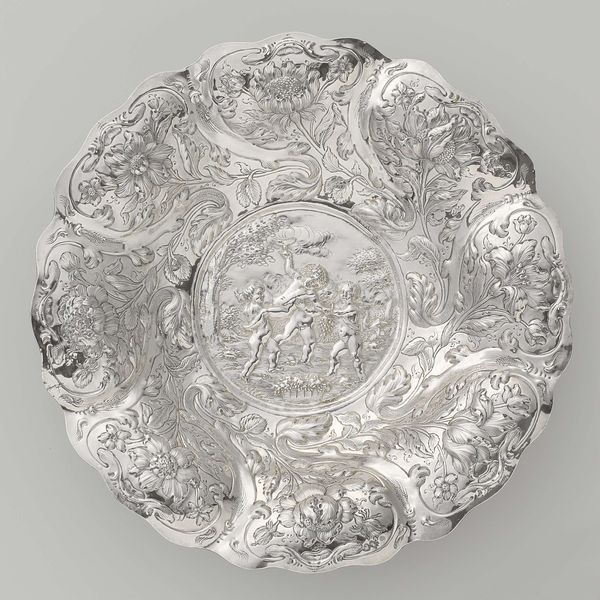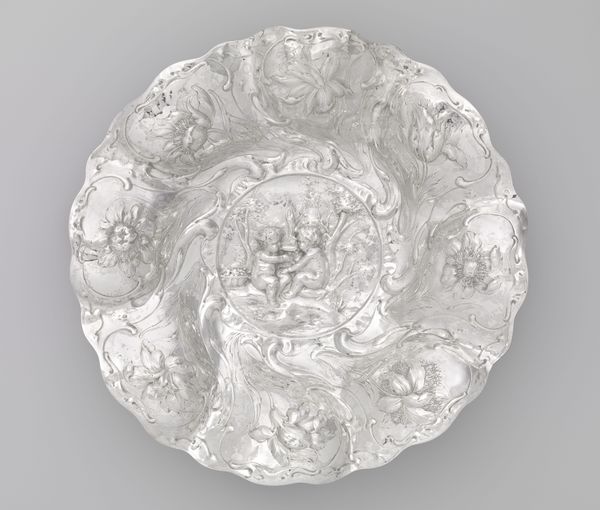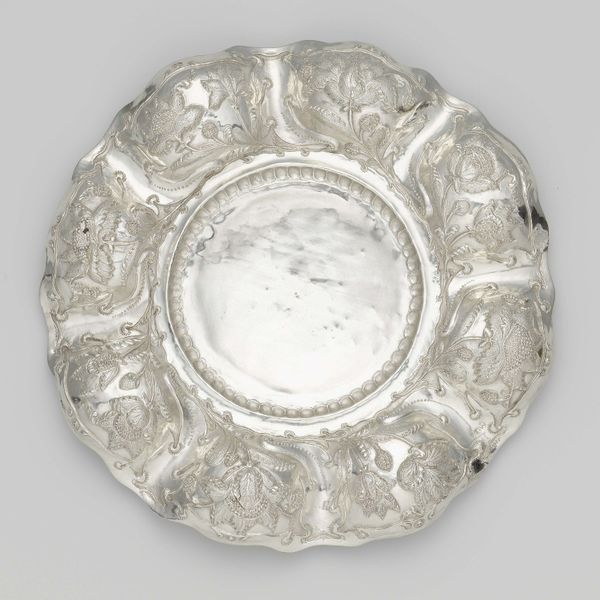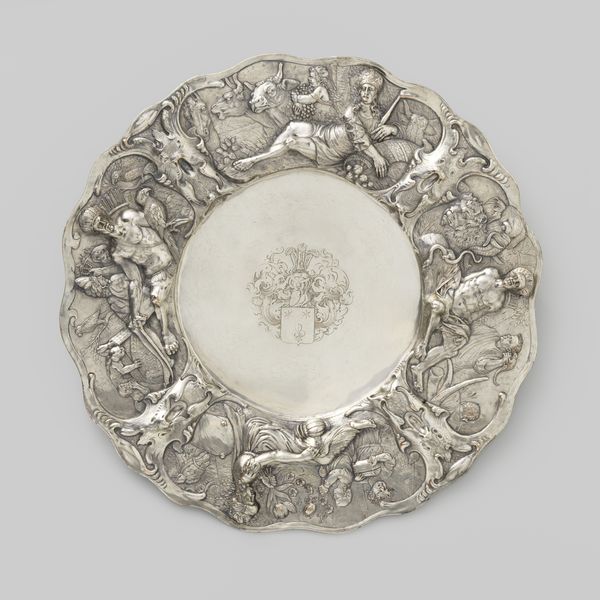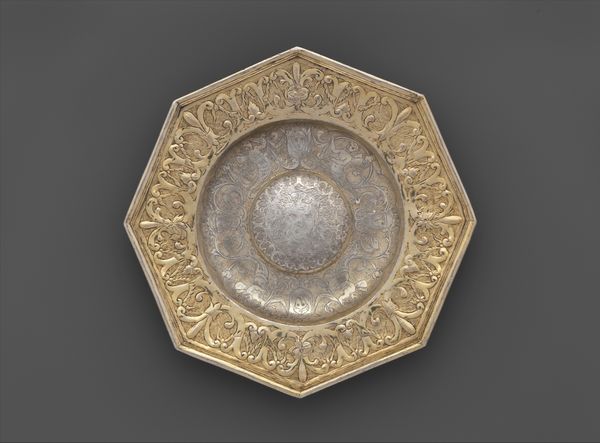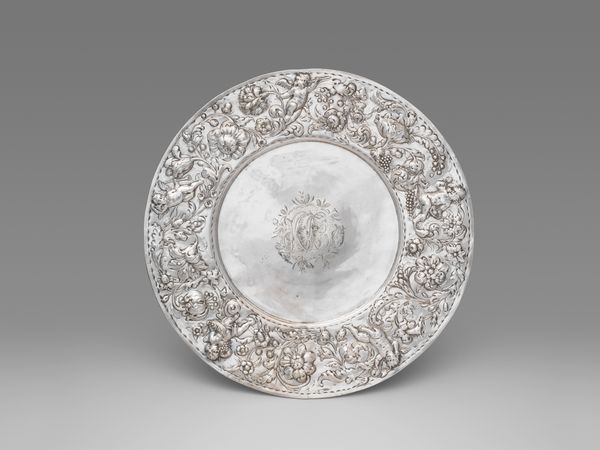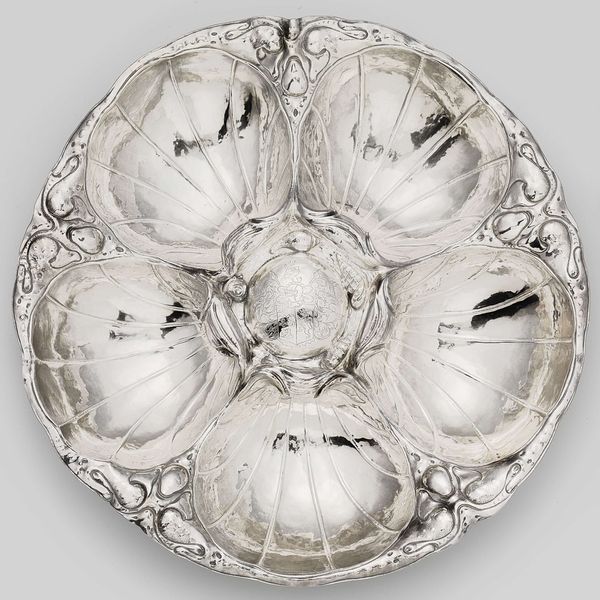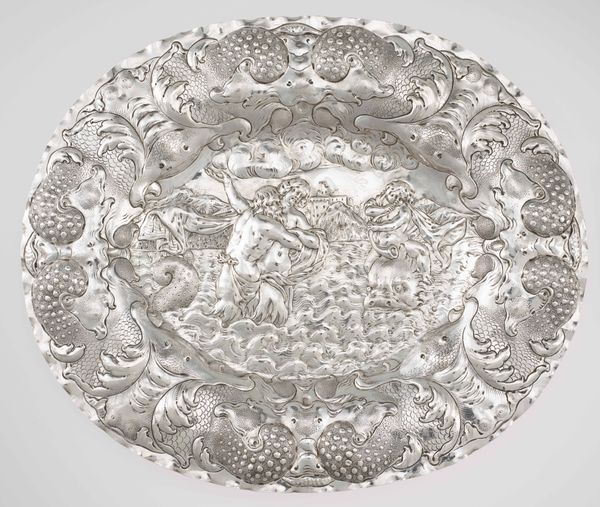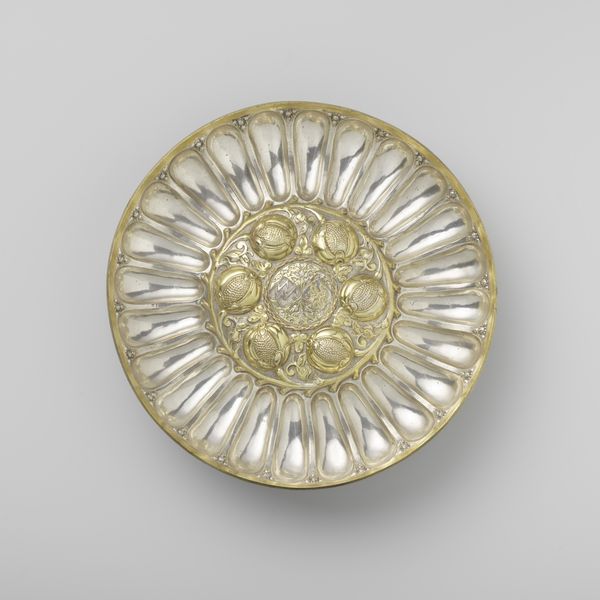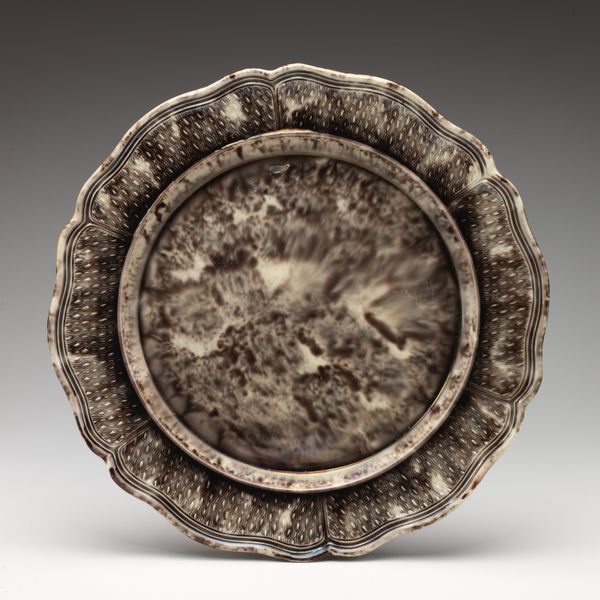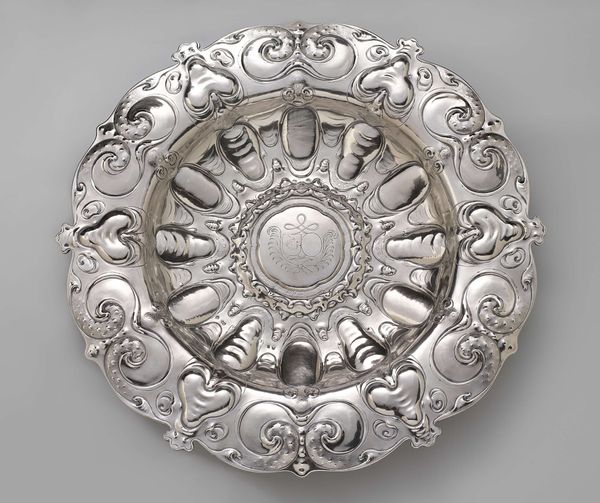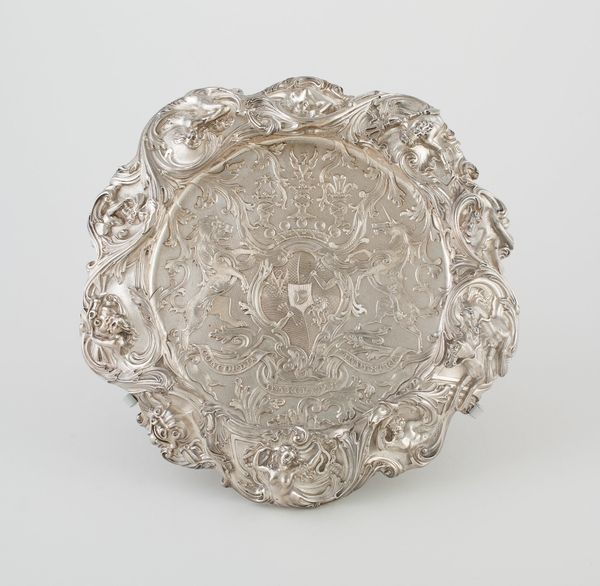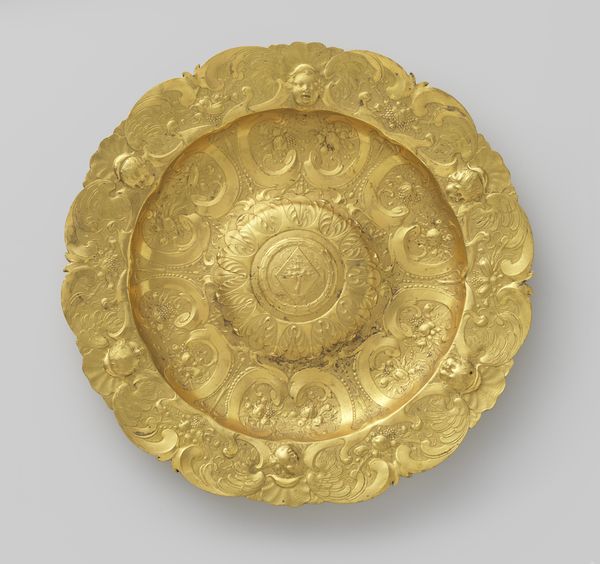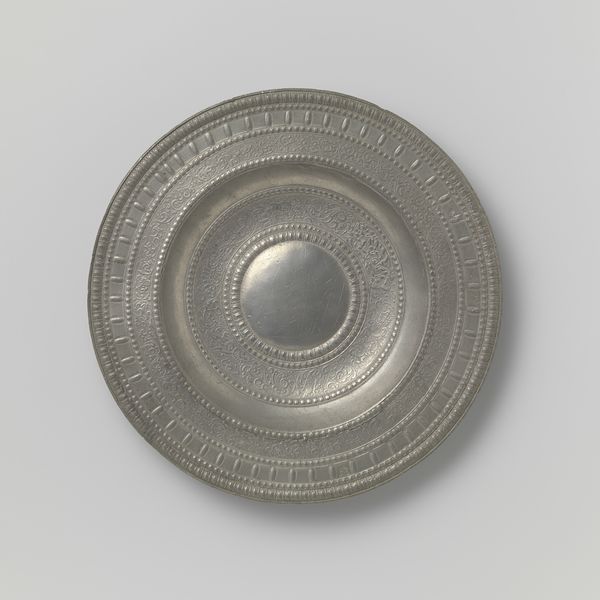
silver, metal, relief, sculpture
#
silver
#
baroque
#
metal
#
relief
#
figuration
#
stoneware
#
sculpture
#
decorative-art
Dimensions: height 7.1 cm, diameter 45.8 cm, weight 1025 gr
Copyright: Rijks Museum: Open Domain
Curator: Let's turn our attention to this rather striking piece. This “Dish,” crafted by Gerloff Brouwer in 1661, is a remarkable example of Baroque silverwork. Editor: It’s incredibly ornate, almost overwhelmingly so! It makes me think of a silver river overflowing with figures and foliage. I find it hard to believe this is a functional object. Curator: Indeed! Functionality almost seems secondary here. Brouwer masterfully employed the relief technique, sculpting figures and scenes directly onto the metal surface. The overall impression is one of lavish detail. Editor: Looking closer, it feels as though the dish narrates a story, doesn't it? Who are the characters and what tale does it whisper to us, perhaps of gods, nymphs, and putti frolicking in a pastoral landscape? The figures around the central medallion appear to engage with each other. How might this relate to the patronage networks driving its creation? Was Brouwer showcasing his technique or responding to specific social and cultural demands? Curator: Intriguing points! I love that you've jumped into who commissioned the piece and their social context, how the item related to them and what statement of purpose it represents. I suppose it serves as an opulent emblem of wealth and status, perfectly suited for displaying in a home or during a feast. The medium of silver itself underscores the message, but it's the artisanal skill that speaks loudest here, echoing through each exquisitely chased detail. Editor: The sheer amount of labor is staggering to contemplate, I'm not even going to pretend otherwise! Consider the silversmith meticulously hammering and chasing the metal—imagine the hours involved, the physical exertion. Silver, with its unique properties, allows such intricate manipulation, responding almost poetically to pressure and design, making each piece as precious in the making as in the owning. Curator: And its enduring appeal comes precisely from this intricate dance of craftsmanship and inherent material value, doesn't it? It elevates something simple into something so evocative, so visually rich. Editor: Absolutely! Examining "Dish," we don’t merely admire a static object, but begin to imagine those complex dynamics of creation, use, and, of course, enduring artistic value. Curator: Precisely! An evocative dive, thanks!
Comments
rijksmuseum about 2 years ago
⋮
The love of flowers so evident in the Netherlands in the third quarter of the 17th century is well demonstrated in this dish. The scalloped edge gives the dish the form of a flower. Moreover, it is decorated with various identifiable flowers, with putti nestled among them. A man and a woman weaving a floral wreath are depicted in the centre of the dish.
Join the conversation
Join millions of artists and users on Artera today and experience the ultimate creative platform.
